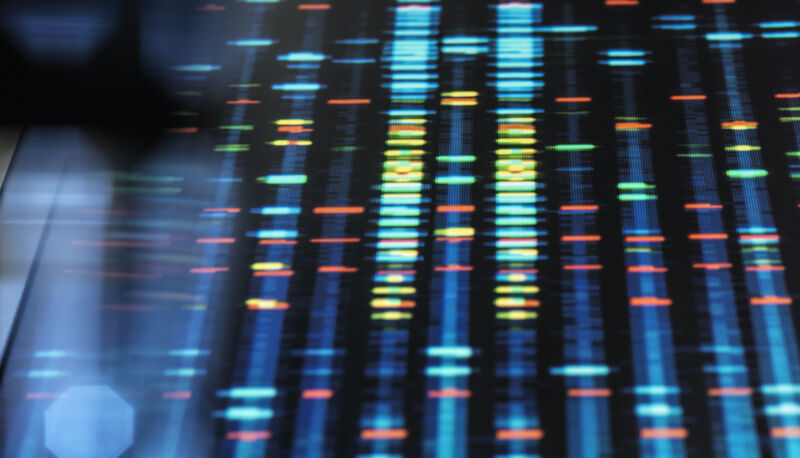A little bit of everything: The Short Story of Science

Enlarge / DNA (deoxyribonucleic acid) profile from a human sample. (credit: TEK IMAGE / SCIENCE PHOTO LIBRARY)
Laurence King Publishing, based in London, is "one of the world's leading publishers of books and gifts on the creative arts." The company has a series of books whose titles all begin with The Short Story of; so far, the series includes the Short Story of Art, of Modern Art, of Photography, of Film, of Architecture, of Women Artists, and of the Novel. The latest title is The Short Story of Science, which will be available in March.
A thing of beautyFirst off, the book is beautiful, as befits its imprint. Each glossy page has a photo of scientists at work, their apparatus, or a depiction of their discoveries. For everything before the 20th century, there is a photo of an artwork instead; so you get a drawing, painting, or sculpture of the scientists being described. The Short Story of Science has the overall feel of those DK Eyewitness Travel guides, except instead of using it to plan your next trip, you can use Science to get a tour of "the breakthroughs that underpin our current understanding of the Universe."
Like the other volumes in the Short Story of series, The Short Story of Science is organized into four sections. The art books are divided into "Movements," "Works," "Themes," and "Techniques." There are corresponding sections in this one. "Histories" starts with ancient astronomers circa 30,000 BCE and runs through string theory. "Experiments" is pretty obvious. "Theories" says, "we can only unlock hidden truths once we have imagined them." Finally, there's "Methods and Equipment," since the materials available define and constrain the technologies we can make.
Read 6 remaining paragraphs | Comments